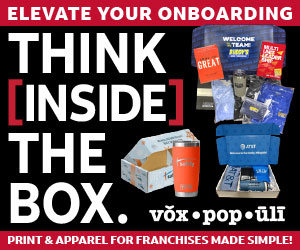7 Things Your Customers Can Do Better Than You!
(Note: Adapted from the book's press release.)
If you think your customers exist solely to "buy your stuff," you're missing a huge part of the consumer marketing picture. Bill Lee, author of The Hidden Wealth of Customers: Realizing the Untapped Value of Your Most Important Asset, says your customers are uniquely equipped to influence your product development, sing your praises, and even close sales for you. In his new book (Harvard Business Press, June 2012, $27), he describes seven things they can do better than you.
"No matter how much money you spend on third-party marketing people, they're still a layer removed from those who buy. They can never really understand customers because they aren't customers themselves. The organizations that achieve rapid growth are those that don't just think of customers as 'buyers of stuff' but as advocates, influencers, and contributors," says Lee.
In the book, Lee offers a vision for a more reliable way to grow a business by maximizing "return on relationship" with what he calls "rock star" customers. When this is done right, a company's best customers will prospect for the firm while also speeding product adoption and improving customer satisfaction and long-term loyalty, he says. It's all part of a virtuous cycle: companies improve what they offer customers, which allows customers to gain more value from their products and services, and thereby improves what customers can offer companies.
The truth, says Lee, is your customers are incredibly well equipped to market, sell, and even develop your products and services. Here are the seven things he says they can do better than you:
1) Attract high-value information from other customers. This "inside knowledge" of their peers creates stratospheric value. Facebook is the quintessential example. Imagine a traditional company that tried to generate the kind of information Facebook generates: real-time data on what movies people are watching, what restaurants they're visiting, what vacations they're taking, and what books they're reading. Facebook dispensed with all the research most companies would have tried to dig up, and instead focused on letting customers provide it.
2) Believably promote your product. It's this simple: You have something to sell. Your customers don't, which makes them far more credible to existing and potential customers than agencies or internal employees. SAS Canada is a good case in point. The company was having a noticeable customer retention issue several years ago. Retention rates had declined from the high 90s to the mid 80s, a situation senior management felt the need to address quickly. SAS software was doing an excellent job of keeping up with customer needs. Unfortunately, the customers didn't seem to realize this. So a small group within SAS, led by Wally Thiessen, built a team of 250 "customer champions" along with 50 "super champions" to spread the word for them.
"SAS saw that it would be futile for the company to keep pointing out how great they were," says Lee. "However, they knew that defecting customers might listen to what other SAS customers had to say. With support from Thiessen and his team, SAS customer champions established regular events in more than 20 major cities, set the agendas, selected speakers (and made presentations themselves), and stayed in touch afterwards via online forums and e-newsletters. As a result, retention rates rebounded back up to the high 90s."
3) Close the sale. Your customers make better salespeople than you do, precisely because they don't have any (obvious) skin in the game. Plus, they can honestly say, "This product or service worked for me. It can work for you, too." Marc Benioff realized the persuasive power of customers in the early days of building Salesforce.com. Lacking the multimillion-dollar budgets of competitors like Oracle and SAP, he relied instead on face-to-face meetings with prospects and customers in major city markets.
"He was surprised to find that prospects at such events were much more interested in talking with customers than with him and his executive team," says Lee. "And he was delighted to find that 80 percent of prospects who attended the events - and interacted with customers in such ways - wound up becoming customers themselves. That's an amazing close rate for any offering. And unlike salespeople, customer salespeople didn't require a bit of training."
4) Understand buyer needs. Many leaders believe that customers can't articulate their needs, much less develop ideas for products to satisfy them. "This is just not true," says Lee. A substantial body of well-established research has shown that many, if not most, successful innovations are customer-originated. In one compilation of studies of 1,193 commercially successful innovations across nine industries by MIT's Eric von Hippel, 737 (60 percent) came from customers. That's why companies that struggle with product development should consider looking outside to customer innovators.
5) Connect with your prospects (aka their peers). By nature, most of us are open to creative new ways to affiliate with our friends and peers. On the other hand, we're not that excited about getting close to companies - a mistake many companies make when they set out to form communities around their brand. Let's face it: Corporate logos and official spokespersons don't exactly promote the warm and fuzzy connections that invite confidences. The key is to figure out a way to foster a dialogue between customers and their peers that touches on issues related to your products or services. "The bottom line is that customers are more apt to trust and care about information when it comes from a peer rather than an organization," says Lee.
6) Energize your online and social media marketing. Many firms are getting nowhere with their web and social media marketing efforts. "That's often because they're trying to adapt traditional marketing communications to these mediums," says Lee. "They need to get creative about bringing customers into these programs."
Intel, for example, credits well-designed customer testimonials and other customer content for an explosion in the creation of qualified prospective customer interest and inquiries through its once-lagging social media and web marketing efforts. In 2011, Salesforce.com cut traditional lead generation spending by 69 percent while increasing spending on customer videos by 1,300 percent and social media. One early result was a 400 percent increase in contacts generated by social media.
7) Help you penetrate new markets. When seeking to penetrate new markets, firms typically recruit some mix of local employees or agencies into their marketing and sales efforts. How about local customers?Microsoft has perfected the art of finding and engaging with local "MVP" (Most Valuable Professional) customers who play a central role. An example is "Mr. Excel," who runs a website by that name, which on some days attracts more visitors than Microsoft's own Excel page! Many companies would have issued a cease and desist order or filed a lawsuit. Microsoft embraces and supports such customers - now numbering some 4,000 around the world. These customers provide the firm with highly effective marketing communications and superb product testing and feedback. They also provide exceptional - and free - customer support that has saved Microsoft hundreds of millions of dollars in support costs.
"Companies often say that 'customers are our best assets,'" says Lee. "But most of the value of these assets lies fallow. Now, with the advent of social media and a global marketplace, more and more companies are starting to harvest these assets and are propelling their organizations to rapid and sustained growth."
Bill Lee helps organizations reinvent customer relationships and accelerate growth through the creation of engaged, passionate customer advocates and communities. He pioneered the concept that return on relationship is the key to organic growth in organizations of any size, public or private. His Lee Consulting Group specializes in strategy, organizational performance improvement, execution, customer community building, market analysis, international growth, and business model innovation. He also is the author of Mavericks in the Workplace: Harnessing the Genius of American Workers. Contact him at 214-559-4380 or [email protected].
Share this Feature
Recommended Reading:
| ADVERTISE | SPONSORED CONTENT |
FRANCHISE TOPICS
- Multi-Unit Franchising
- Get Started in Franchising
- Franchise Growth
- Franchise Operations
- Open New Units
- Franchise Leadership
- Franchise Marketing
- Technology
- Franchise Law
- Franchise Awards
- Franchise Rankings
- Franchise Trends
- Franchise Development
- Featured Franchise Stories
| ADVERTISE | SPONSORED CONTENT |








 The franchise listed above are not related to or endorsed by Franchise Update or Franchise Update Media Group. We are not engaged in, supporting, or endorsing any specific franchise, business opportunity, company or individual. No statement in this site is to be construed as a recommendation. We encourage prospective franchise buyers to perform extensive due diligence when considering a franchise opportunity.
The franchise listed above are not related to or endorsed by Franchise Update or Franchise Update Media Group. We are not engaged in, supporting, or endorsing any specific franchise, business opportunity, company or individual. No statement in this site is to be construed as a recommendation. We encourage prospective franchise buyers to perform extensive due diligence when considering a franchise opportunity.